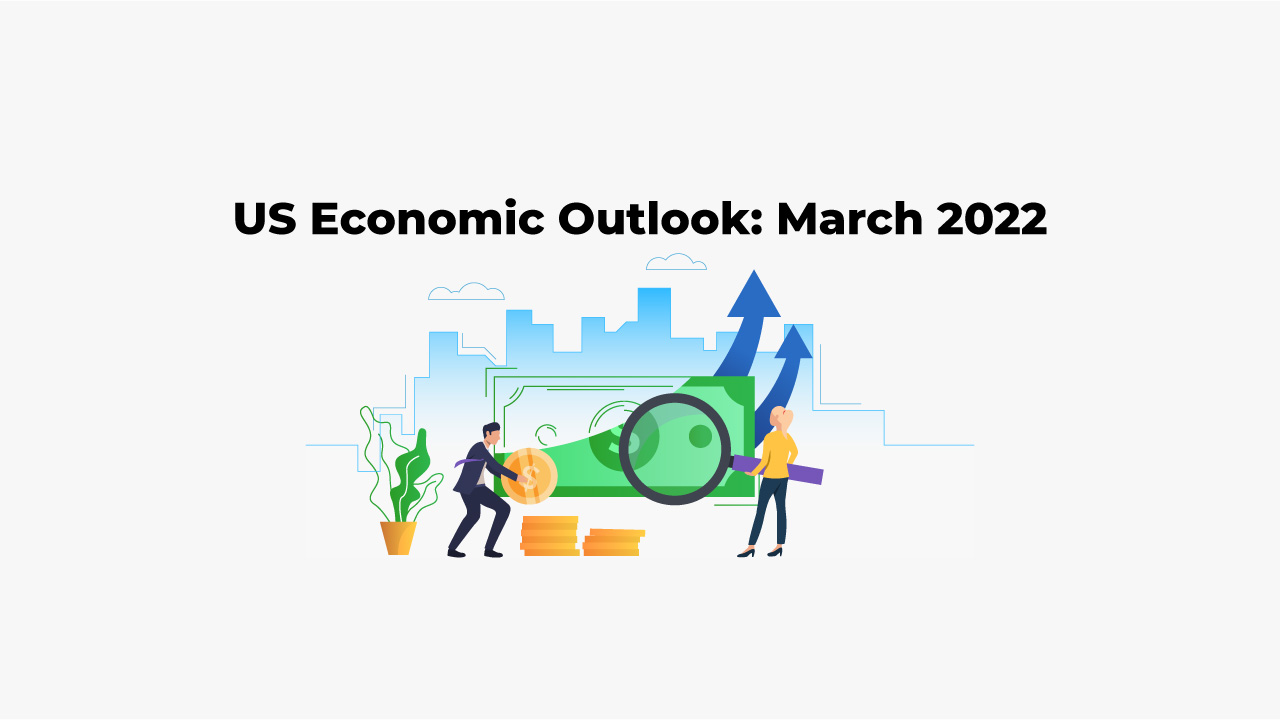US Economic Outlook: March 2022

Last Updated: 15th December 2022 - 02:45 am
The US economy disregarded the impact of the rise in Omicron cases around the turn of the year. Consumer spending indicators recovered quickly after a slight correction in December 2021 and non-farm payrolls expanded by an average of 580,000 in January and February. Direct exposure to trade with Russia is modest but the rise in global oil prices is intensifying what was already becoming a major inflation problem.
US exports to Russia and Ukraine account for only 0.4% of US merchandise exports and 1% of imports. In 2021, the US was a moderate net exporter of oil and oil products and US wholesale gas prices have not experienced the sharp rises as in Europe. But the rise in global oil prices following Russia’s invasion and the sanctions which followed are accelerating the rise in headline inflation, which has reached a 40-year high of 7.9% YoY in February.
The rise in US inflation was initially driven by the rise in core consumer goods prices. Meanwhile, services inflation continues to rise, hitting a 30-year high of 4.4% in February. Some of this reflects re-opening dynamics in the transportation sector but the key driver was accelerating housing rentals. The broadening of inflation to services reflects a tightening of the labor market and the rise in wages.
Fed messaging had already turned more aggressive in recent months and it raised interest rates by 25bp on 16 March to 0.5%. The rise in oil prices is likely to push US inflation close to 9% in March and we now anticipate six more hikes in 2022 and four in 2023, taking the Fed Funds Rate back to 3% by the end-2023. Fed balance sheet run-off is also likely to start in May. The commentary accompanying its March meeting suggests the Fed has now become singularly focussed on using its tools to restore price stability.
- Performance Analysis
- Nifty Predictions
- Market Trends
- Insights on Market
Trending on 5paisa
Market Outlook Related Articles
Disclaimer: Investment in securities market are subject to market risks, read all the related documents carefully before investing. For detailed disclaimer please Click here.
 5paisa Research Team
5paisa Research Team
 Sachin Gupta
Sachin Gupta




